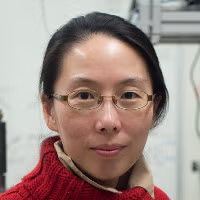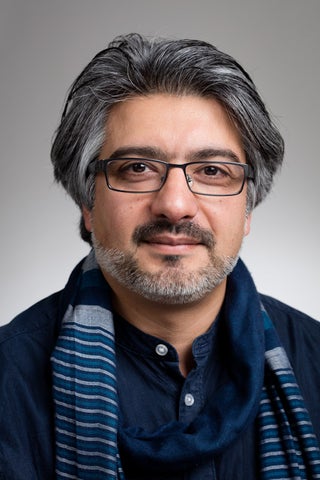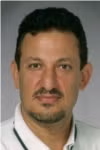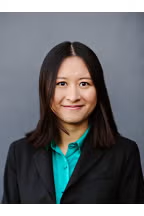
Facilities supporting this research area:
The main thrust in this area is the application of electromagnetics to a wide range of engineering systems and devices including antennas, circuits and systems over the RF/microwave, millimeter-wave/THz, and optical range of frequencies. Research and teaching in this area cover underlying theoretical development and computational methods for investigation and exploration of novel engineered materials and device/system concepts, computational methods for simulation and design optimization, and measurement and characterization methods.
Electromagnetic and photonic devices and systems are the main enablers of optical communication systems/components, modern sensor/imaging technologies, and ultra-high speed electronics, nano-photonics, and quantum optics. In addition, numerous emerging areas such as eHealth/mobile-Health, smart energy systems, environmental monitoring and remote sensing, as well as their component technologies (wireless bio-medical devices and implants, lab-on-chip, nano-photonics, nano-electromagnetic sensor and actuators, etc.), which form essential infrastructure of the future knowledge-based "green" society, heavily depend on progress in research and availability of expertise in these areas.
Research activities in this area are currently supported by 10+ labs and fabrication labs/workshops and vast computational facilities. The Centre for Intelligent Antenna and Radio Systems (CIARS) consists of 6 laboratories, providing world class infrastructure for on-chip, devices, circuit, system, and electromagnetic radiation characterization over MHz to THz range frequencies, which is unique in Canada and among the best in the world. The Centre for Integrated RF Engineering (CIRFE) contains one of the most advanced academic Micro-Electro-Mechanical Systems (MEMS) fabrication laboratories in Canada.
With 9 ECE professors actively involved, this research area is the largest cluster of its kind in Canada; it attracts top students and researchers from around the globe, giving them access to world-class research facilities. They are among the best trained in the field, and are in high demand in Canada and abroad.
Faculty members participating in antennas, microwaves and wave optics research:
Slim Boumaiza

Biography
Dr. Slim Boumaiza is a Professor in the Department of Electrical and Computer Engineering at the University of Waterloo.
His research is focused on defining, conceptualizing, designing, and realizing high-performing microwave and millimeter wave circuits and systems for wireless communications (with applications in 4G, 5G and the Internet of Things). He directs the Emerging Radio System Research Group (EmRG), which conducts multidisciplinary research encompassing the semiconductor device, circuit, and system levels of radio hardware. Under his supervision, researchers investigate the areas of transistor modelling and characterization (at the semiconductor device level), ultra wideband and highly efficient power amplifiers (at the circuit level) and low power linearization schemes (at the system level).
He is passionately involved in communicating knowledge of radio systems through teaching, supervision, and youth outreach. He has taught several undergraduate and graduate courses covering basics of electrical engineering and advanced topics in microwave engineering. Over 100 highly qualified personnel (undergraduate, master's, and PhD students, post-doctoral fellows, and other research staff) have worked under his supervision to date. Many have gone on to secure highly sought-after positions in industry. Dr. Boumaiza and his team actively participate in university-led efforts to engage youth and minorities and promote their interest in engineering.
Research interests
- Microwave and Millimeter Wave (mm-wave) Circuits and Systems
- High Efficiency Power Amplifiers for Wireless Communications (sub 6 GHz and mm-wave)
- Digital Predistortion Techniques for 4G and 5G Power Amplifiers and Massive MIMO\/Beamforming Transmitters
- Nonlinear Microwave Circuits Characterization and Modeling
- 5G Radio Hardware
- Advanced Circuits and Systems for Microwave and mm-wave Radio Front-ends (printed circuit boards and integrated circuit technologies)
- Advanced Signal Processing for Wireless Communications
Na Young Kim

Biography
Na Young Kim is an Associate Professor in the Department of Electrical and Computer Engineering. She has an affiliation with the Institute for Quantum Computing and and Waterloo Institute for Nanotechnology and cross-appointments with the Department of Physics and Astronomy and the Department of Chemistry.
Na Young leads the Quantum Innovation (QuIN) laboratory, which aims to build large-scale quantum processors based on novel materials and advanced technologies. Two kick-off projects are under way: (1) a semiconductor quantum processors project that establishes controllable optical and electrical domains, in which her research team is learning insights of exotic materials and the fundamental nature of symmetries, and (2) a project in which a multi-functional classical and quantum device arrays establishes a planar architecture comprised of nano-scale devices with electrical, optical, thermal and mechanical functionality.
Research interests
- Large-Scale Solid-State Quantum Computer
- Quantum Simulator
- Quantum Information Processing & Communications
- Quantum Artificial Intelligence
- Quantum Security
- Nanotechnology
John Long

Biography
Dr. John R. Long is a professor in the Department of Electrical and Computer Engineering at the University of Waterloo. He received a B.Sc. in Electrical Engineering from the University of Calgary in 1984, and a M.Eng. and Ph.D. in Electronics from Carleton University in Ottawa, Canada, in 1992 and 1996, respectively. He was the Chair of the Electronics Research Laboratory at the Delft University of Technology in the Netherlands.
His research interests include high speed wireline and high frequency, low power and mobile transceiver circuits for integrated wireless communications systems.
Research interests
- high speed wireline and high frequency
- low power and mobile transceiver circuits for integrated wireless communications systems
- advanced manufacturing
Hamed Majedi

Biography
Amir Hamed Majedi is a Professor in the Department of Electrical and Computer Engineering, and cross-appointed to the Department of Physics and Astronomy at the University of Waterloo. Dr. Majedi leads the Integrated Quantum Optoelectronics Lab (IQOL) within the Waterloo Institute for Nanotechnology.
His main research interests lie within engineering quantum electrodynamics with a focus on superconducting optoelectronics and quantum photonics. His research activities encompass superconducting nanowire single photon detectors, single photon sources based on nanowire quantum dots, superconducting plasmonic detectors and waveguides, superconducting-based quantum dot LEDs for single and entangled photon sources, and graphene photonics.
IQOL pursues theoretical and experimental investigations of quantum and electromagnetic phenomena in superconducting micro-to-nano scale structures to advance optoelectronic, mm-wave/THz and photonic devices and systems. The group aims to develop theoretical foundations, design methodologies, device/system level synthesis, and characterization techniques in order to create superconductive quantum devices for applications that include ultrafast communications and quantum information processing and bio-nanotechnology.
Research interests
- Quantum photonics
- Superconducting optoelectronics
- Microwave-photonics
- Superconducting & photonic quantum devices
- THz photonic devices
- Systems Electromagnetic band gap structures
- Nano-electrophotonics
- Nano-electrodynamics
- Microwaves & Photonics
- Nano-electronics
- Single-Photon Technology
- Photonics
- Quantum Information Technology
- Quantum Electronics
- Solid-state Quantum Electrodynamics
- Nanotechnology
Raafat Mansour

Biography
Raafat Mansour is a Professor in the Department of Electrical and Computer Engineering at the University of Waterloo. He is a former holder of a Tier 1 Canada Research Chair in Micro-Nano Integrated RF Systems, and an NSERC Industrial Research Chair for two terms (2001-2005) and (2006-2010). Prior to joining Waterloo in January 2000, Dr. Mansour was with COM DEV Cambridge, Ontario from 1986-1999, where he held various technical and management positions in COM DEV’s Corporate R&D Department. Dr. Mansour holds 37 US and Canadian patents and has more than 380 refereed publications to his credit. He is a co-author of a 23-chapter book published by Wiley and has contributed 6 chapters to 4 other books.
Dr. Mansour founded the Centre for Integrated RF Engineering (CIRFE) at the University of Waterloo. It houses a clean room and a state-of-the-art RF test and characterization laboratory. He acted as a catalyst for ideas inspiring the next generation of Waterloo entrepreneurs to bring their work to market. From research carried out in his research lab at the University of Waterloo, he and his graduate students co-founded two companies: AdHawk Microsystems and Integrated Circuit Scanning Probe Instruments (ICSPI-Corp).
Dr. Mansour is a Fellow of the IEEE, the Canadian Academy of Engineering, and the Engineering Institute of Canada. He was the recipient of the 2014 Professional Engineers Ontario (PEO) Engineering Medal for Research and Development and the 2019 IEEE Canada A.G.L. McNaughton Gold Medal Award.
Research interests
- Tunable \/ Reconfigurable Microwave and Millimeter-wave circuits and subsystems
- Filters and Multiplexers
- RF MEMS Technology
- RF Phase Change Material (PCM) Technology
- Microwave and Millimeter-wave Components for 5G Communication Systems
- Superconductive Microwave and Millimeter-wave Devices
- Computer-aided Tuning of Microwave Devices
- Intelligent RF\/Microwave Sub-systems
- CMOS-MEMS Nano Instrumentations
Omar Ramahi

Biography
Dr. Omar Ramahi is a professor in the Department of Electrical and Computer Engineering at the University of Waterloo.
His research interests include radiating systems, renewable energy technology, biomedical applications of electromagnetic waves and fields, electromagnetic compatibility and interference, metamaterials and its engineering applications, and material measurements. In addition to his research, he co-founded Applied Electromagnetic Technology, LLC., and Wave Intelligence Inc.
Dr. Ramahi has received numerous awards as a result of his extensive research and teaching capabilities. He was recognized for his graduate research work with the 2010 University of Waterloo Award for Excellence in Graduate Supervision. Additionally, he was awarded the IEEE Electromagnetic Compatibility Society Technical Achievement Award in 2012. Dr. Ramahi is an elected IEEE Fellow.
He has written over 450 journal and conference papers on electromagnetic phenomena and computational techniques. EMI/EMC Computational Modeling Handbook is one of the notable books that Dr. Ramahi co-authored.
Research interests
- Radiating Systems
- Theoretical and Computational Electromagnetics
- Electromagnetic Compatibility
- Interference and Electronic Packaging
- Biomedical Applications of Electromagnetics
- Photonics
- Material measurements
- Antennas, Microwaves & Photonics
- Medical imaging
- Scanning
- Energy harvesting/bio-energy
- Renewable energy
- Sensors and devices
- Wireless communications/networking
Simarjeet Saini

Biography
Simarjeet Saini is an Associate Professor in the Department of Electrical and Computer Engineering at the University of Waterloo. He completed his doctorate at the University of Maryland, College Park in 2001 under the guidance of Professor Mario Dagenais. Professor Saini’s Ph.D. thesis was on design and development of a new platform technology for monolithic integration of photonic devices called Passive Active Resonant Coupler (PARC). The resulting technology led to the foundation of a start-up company called Covega Corporation in Jessup, Maryland. Dr. Saini worked as the Lead Optoelectronics Device Engineer at Covega, and later, as a Lead Applications Engineer. He led the design and development of Covega’s single angled facet chips, semiconductor optical amplifiers and high power lasers.
In August 2004, Dr. Saini co-founded Altanet Communications, a start-up company that focused on ethernet based metro area networks with less than 5 ms restoration time using intelligence in the optical domain.
Dr. Saini’s research interests include: optoelectronics components for datacom and telecom, high speed optical networks, tunable mid-IR lasers, nanophotonics chem-bio sensors, and microwave photonics. He holds 5 US patents and has 5 more in various stages of application, of which 3 have already been commercialized.
Research interests
- Monolithic Integration of photonics devices
- Optoelectronics components for datacom and telecom
- High speed optical networks
- Tunable mid-IR lasers
- Nanophotonics Chem-Bio Sensors
- Microwave photonics
- Antennas, Microwaves & Photonics
- Nanotechnology
Lan Wei

Biography
Professor Lan Wei received her B.S. in Microelectronics and Economics from Peking University, Beijing, China in 2005 and M.S. and Ph.D. in Electrical Engineering from Stanford University, Stanford, USA (with Professor H.–S. Philip Wong) in 2007 and 2010, respectively. Before joining University of Waterloo in 2014, she worked at Altera Corporation in San Jose, California, where her responsibilities included foundary technology evaluation, power management and Stratix X FPGA product development with Intel 14nm technology. She also worked as a post-doctoral associate in Microsystems Technology Laboratories, Massachusetts Institute of Technology under Professor Dimitri Antoniadis. Her research focuses on device-circuit interactive design and optimization, cryogenic CMOS electronics for quantum computing, error-resilient computation, and integrated electronic systems using emerging technologies including GaN, RRAM and low-dimensional materials.
Wei has served on the Technical Program Committee of several academic conferences including IEDM (2011-2012, 2021-2022), DATE (2021 - ), ICCAD (2019 - ), VLSI-TSA (2013 - ), GLSVLSI (2017 - ), ISQED (2019 - ) ISLPED (2013), etc, and was listed as one of the key contributors to the Process Integration, Devices, and Structures Chapter (PIDS) of International Technology Roadmap for Semiconductors (ITRS) 2009 Edition. She is the co-developer of the MIT Virtual Source GaN HEMT (MVSG) Compact Model, which is an Industry Standard approved and supported by the Compact Model Coalition for GaN HEMT compact model.
Research interests
- Nanoelectronic devices
- Device-circuit interactive design and optimization
- Cryogenic CMOS electronics for quantum computing
- GaN-based devices and circuits
- Low-dimensional materials based integrated nanoelectronic systems
- RRAM device, circuit, and integrated system
- Device-circuit interactive design
- Error-resilient computing
Adjunct faculty members participating in antennas, microwaves and wave optics research:
George Shaker (Adjunct)

Biography
Dr. George Shaker is an adjunct associate professor in the Department of Electrical and Computer Engineering at University of Waterloo. He also oversees wireless activities in the sensors and devices lab at the UW-Schlegel Research Institute for Aging. Previously, he was with Research in Motion (BlackBerry). He was also with Georgia Institute of Technology. He has been the Principal Scientist and Head of Research at Spark Technology Labs (STL), since its founding in 2011. In 2017, George was selected by the office of the president of NSERC among a group of ten Canadian professors to discuss Canadian research advancement in the Internet of Things (IoT) area at the special NSERC-NRC-MOST meeting in Ottawa. In addition, prof. Shaker serves on the organizational committee of the French-Canadian Bioengineering School.
With more than fifteen years of industrial experience in technology, and about eight years as an adjunct faculty member leading projects related to the application of wireless sensor systems for healthcare, automotives, and unmanned aerial vehicles, Prof. Shaker has many design contributions in commercial products available from startups and established companies alike. A sample list includes: COM DEV \, Blackberry, Google, Spark Tech Labs, Bionym, Lyngsoe Systems, ON Semiconductors, Ecobee, Medella Health, NERV Technologies, Novella, Thalmic Labs (North), General Dynamics Land Systems, and Omron Technologies.
George has received multiple recognitions and awards, including the NSERC Canada Graduate Scholarship (sole winner in the area of Electromagnetics across Canada, 2007-10, first UW student to receive the scholarship in EM), the Ontario Graduate Scholarship (2007, 2010), the European School of Antennas Grant at IMST-GmbH (2007), the IEEE AP-S Best Paper Award (2009, 3, first @ UW), the IEEE AP-S Honorable Mention Paper Award (Twice, 2008, 2011), the IEEE Antennas and Propagation Graduate Research Award (2008/2009, first @ UW), NSERC CGS-FSS (2009/2010, sole winner from UW Engineering), the IEEE MTT-S Graduate Fellowship (2009, first UW student to receive the fellowship), and the Electronic Components and Technology Best of Session Paper Award (2010). Two paper he co-authored in IEEE Sensors were among the top 25 downloaded papers on IEEEXplore for several consecutive months (2012/2017). He was the supervisor of the team winning the third best design at IEEE APS 2016, APS 2017 HM paper award, 2018 CVS Best Paper, and two IEEE APS Research Awards.
Research interests
- Antennas
- RF
- Wireless
- mm-Waves
- Sub-THz
- Sensors
- BioElectromagnetics
- Telematics
- V2X Communications
- RF\/microwave\/millimeter wave\/Terahertz (THz) circuits and antenna systems
- Radio frequency (RF)\/microwave packaging and Electromagnetic compatibility
- (EMC)\/Electromagnetic interface (EMI) analyses
- Vehicle and UAV wireless communications, navigation systems, and telematics systems
- Bio-wearable electronics and systems
- Energy harvesting systems
- Complex propagation and scattering phenomena
- Devices and novel electromagnetic materials and wireless sensors
- Bioengineering
- Biomedical Engineering